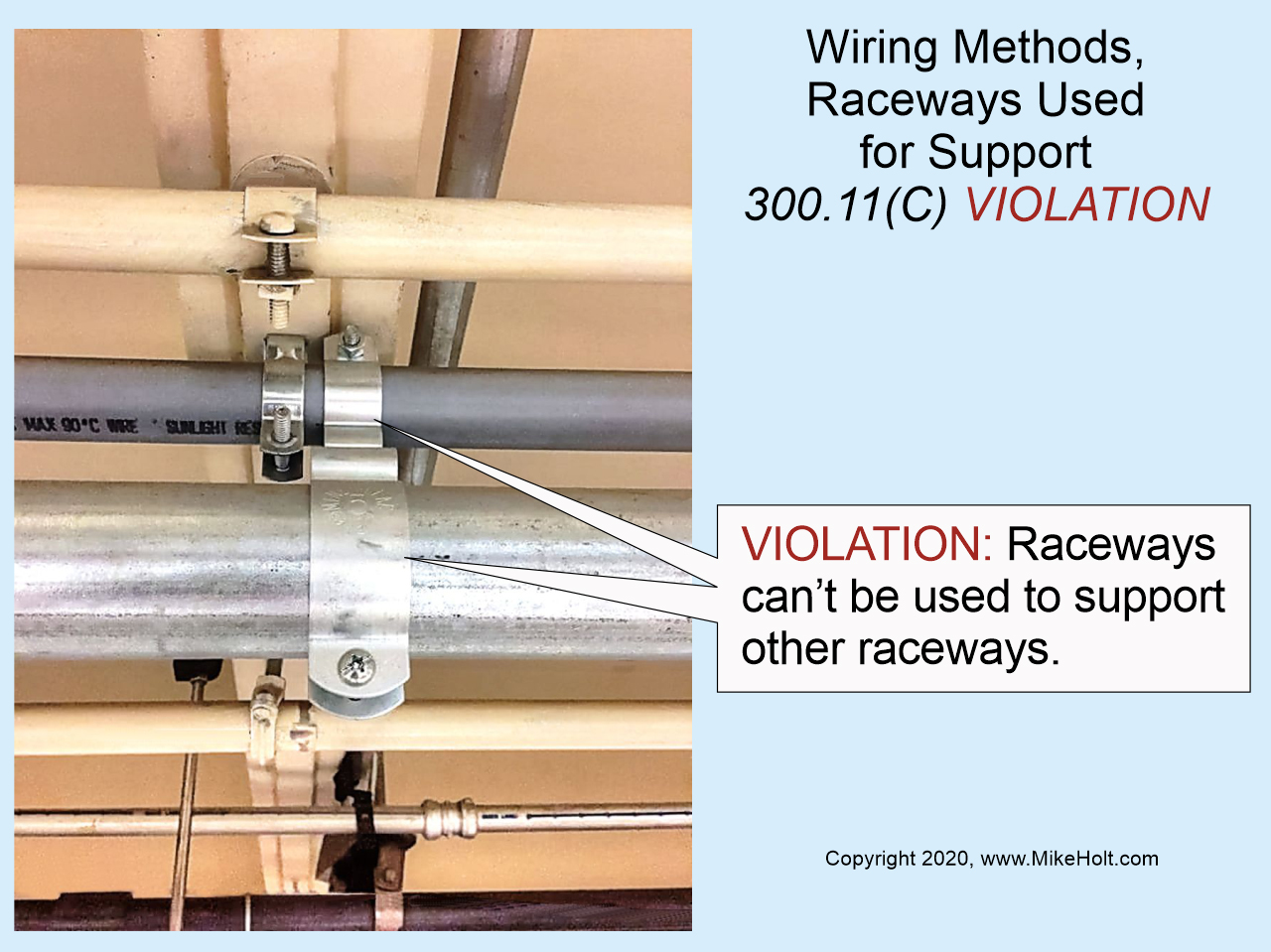|
For EC&M Magazine
By Mike Holt, NEC® Consultant
Here's the follow-up to yesterday's newsletter.
This includes the answers to the questions sent, so you can see how you did.


Figure 01
|
 |
|
Figure 01
|
For EC&M Magazine
By Mike Holt, NEC® Consultant
Here's the follow-up to yesterday's newsletter.
This includes the answers to the questions sent, so you can see how you did.

Note: The answers to these questions are based on the 2020 NEC.
Q1. What are the requirement for securing and supporting raceways and cable assemblies?
A1. 300.11 Securing and Supporting
(A) Secured in Place. Raceways, cable assemblies, and enclosures must be securely fastened in place.
(B) Wiring Systems Installed Above Suspended Ceilings. Ceiling-support wires or the ceiling grid is not permitted to support raceways or cables. Independent support wires secured at both ends can be used to support raceways or cables.
(C) Raceways Used for Support. Raceways are not permitted to support other wiring methods, except as follows: Figure 01
(2) Class 2 and 3 Circuits. Class 2 and 3 cables can be supported by the raceway that supplies power to the equipment controlled by the Class 2 or 3 circuit.
(D) Cables Not Used as Means of Support. Cables are not permitted to support other wiring methods.
Q2. What are the rules about mechanical continuity for raceways and cable sheaths?
A2. 300.12 Mechanical Continuity
Raceways and cable sheaths must be mechanically continuous between boxes, cabinets, and fittings.
Ex 1: Short sections of raceways used to provide support or protection of cables from physical damage are not required to be mechanically continuous [250.86 Ex 2 and 300.10 Ex 1].
Ex 2: Raceways and cables installed into the bottom of open-bottom equipment such as switchboards, motor control centers, and floor or pad-mounted transformers are not required to be mechanically secured to the equipment.
Q3. What are the rules about having ˜free' conductors at boxes for splicing and termination?
A3. 300.14 Length of Free Conductors
At least 6 in. of conductor, measured from the point in the box where the conductors enter the enclosure, must be available at each point for conductor splices or terminations.
Boxes with openings less than 8 in. at any dimension must have at least 6 in. of conductor, measured from the point where the conductors enter the box, and at least 3 in. of conductor outside the box.
|

